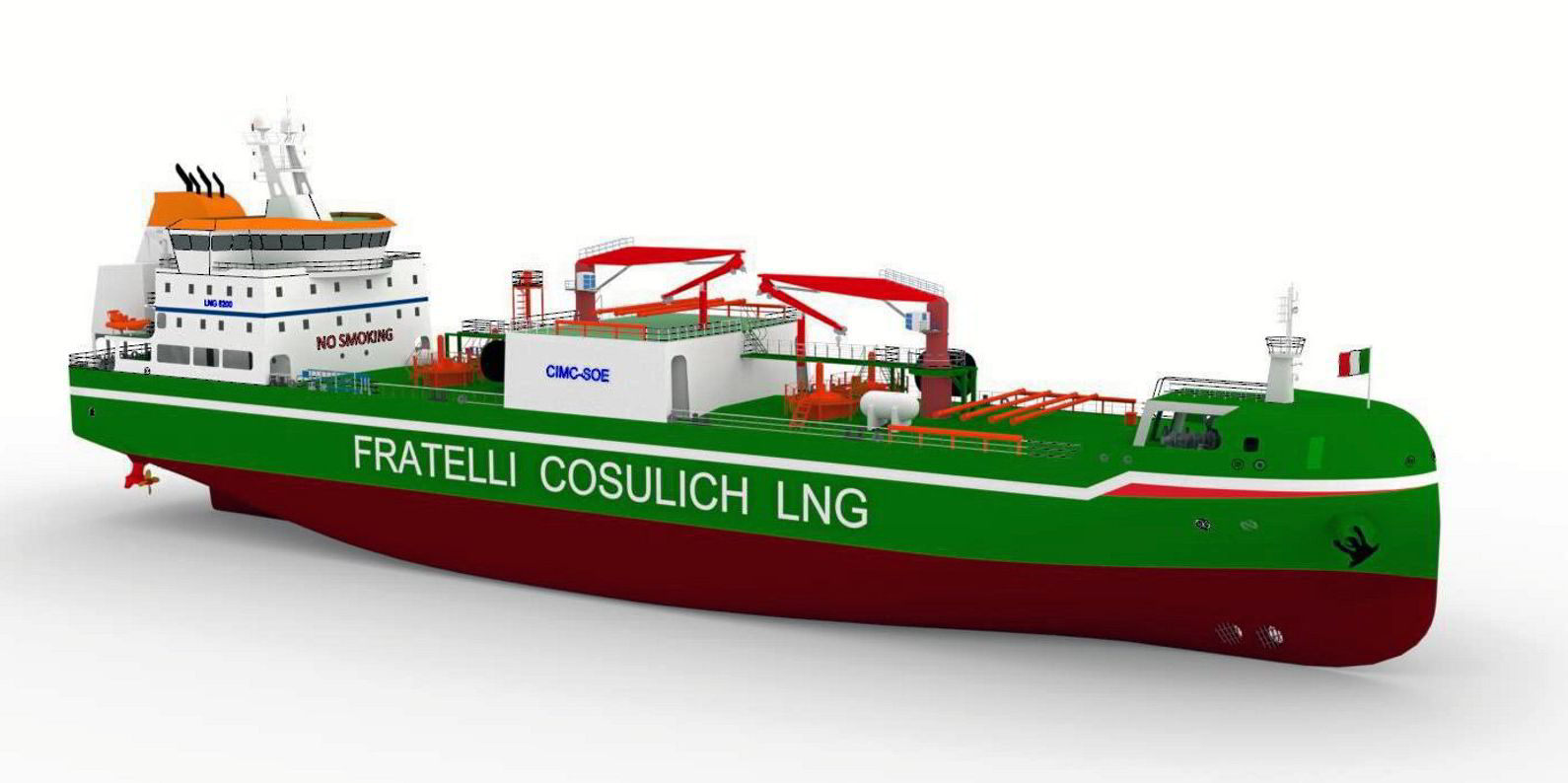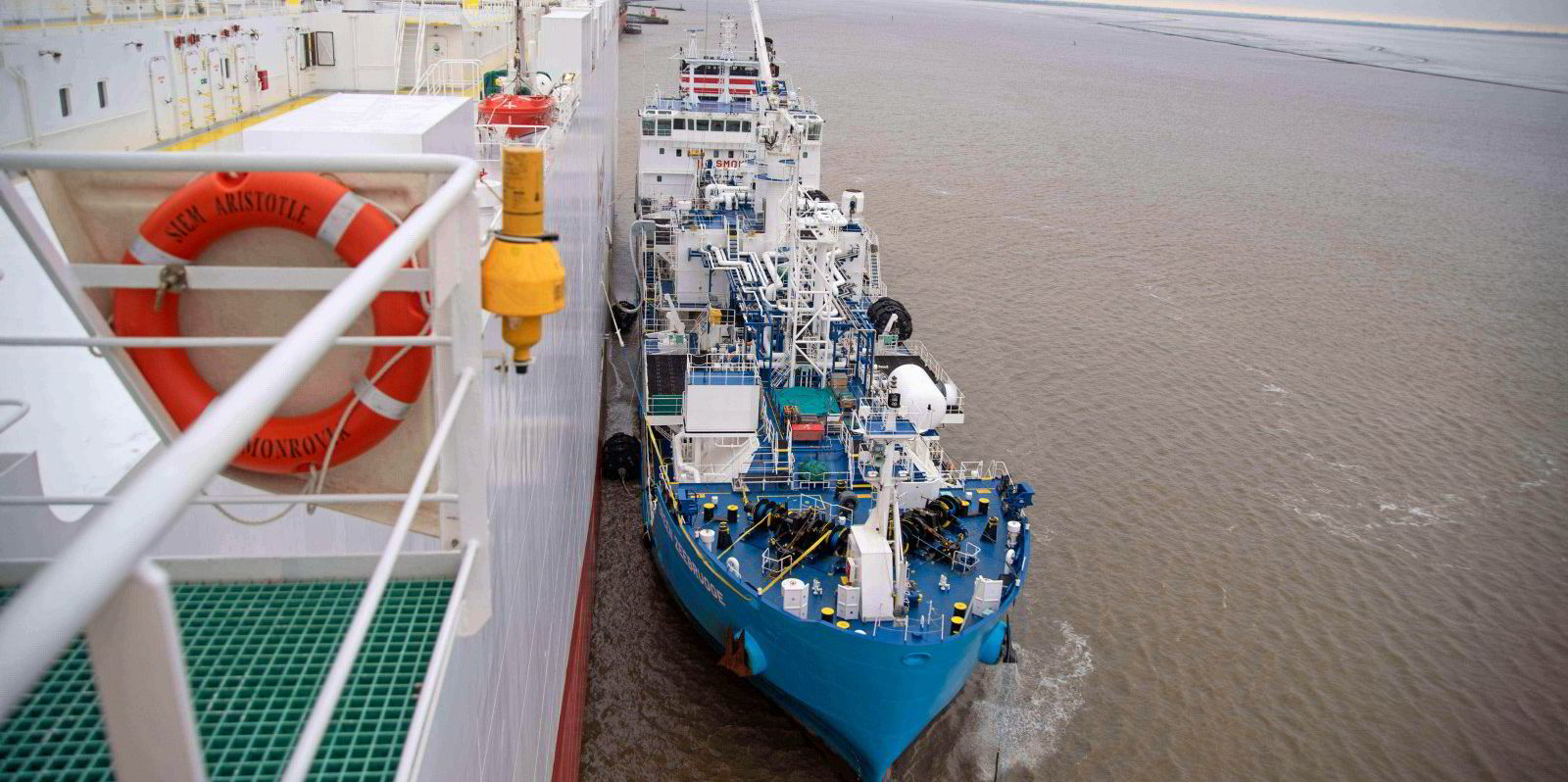Classification society DNV said the consumption of LNG as a marine fuel is likely to quadruple in the next few years.
In a webinar on Tuesday, DNV business development manager Christos Chryssakis showed LNG consumption for the confirmed LNG-fuelled fleet as topping 1 million tonnes per annum in 2020.
The figure rises to more than 2.5m tonnes this year before crashing off DNV’s chart at over 3.5m tonnes by 2024.
Thinking big
Chryssakis said the sharp rise is due to the trend towards larger vessels being built to fuel with LNG.
He said in the past few years the industry has seen orders for large tankers, containerships, cruise vessels and lately bulk carriers.
Chryssakis said 16% of the newbuildings ordered in 2020 were LNG-fuelled vessels.
In the first four months of this year, the figure has shifted up to 18% of all newbuildings contracted.
DNV expects LNG-fuelled vessels numbers to more than double in the next two to three years.

Chryssakis said LNG fuelled vessels are now operating worldwide on most of the main shipping routes, creating a need for bunkering infrastructure.
The existing LNG bunker vessels (LNGBVs) are concentrated around the main shipping hubs with many more projects planned. The only gaps on availability are now in South Africa and South America, he added.
Private projects
His figures show the number of LNG bunker vessels more than doubling from last year’s figures to over 40 units this year, and expanding further to more than 60 vessels with a cumulative capacity of over 600,000 cbm by 2023.
About half the LNGBVs, 29%, are between 5,000 cbm to 10,000 cbm in size.
He said LNGBV projects are no longer publicly flagged up before they are built, making it more difficult to get advanced information on them, so DNV expects this picture to grow even faster in the future.
The manager said pilots of DNV’s FuelBoss tool, which connects LNG fuel suppliers with shipowners, has shown that there are also many LNG bunkerings occurring on a spot basis rather than on long-term contracts.
“This shows that there is some more certainty on availability of LNG as a fuel,” he said.
Business case
Chryssakis said the rise in uptake of LNG as a marine fuel is due to a combination of its environmental benefits, which can amount to a 23% reduction in greenhouse gas emissions for large two-stroke engines, but also what he said is a “significant cost advantage” for larger vessels.
Looking at bunker fuel supply out of Rotterdam, he said LNG is cheaper than very low-sulphur fuel oil, and competing with high-sulphur fuel oil, with prices looking to hold for several years ahead.
He said this makes “an attractive business case” for large vessels with high fuel consumption which, depending on the ship type, can achieve payback on the additional $10m to $15m of capital expenditure on building an LNG-fuelled vessel in five to seven years.
Chryssakis also tackled what the International Maritime Organization's incoming carbon intensity index might mean for an LNG-fuelled vessel delivering in 2023.
He said this vessel might be able to sail until almost 2040 without needing modifications, assuming the regulations stay the same.








